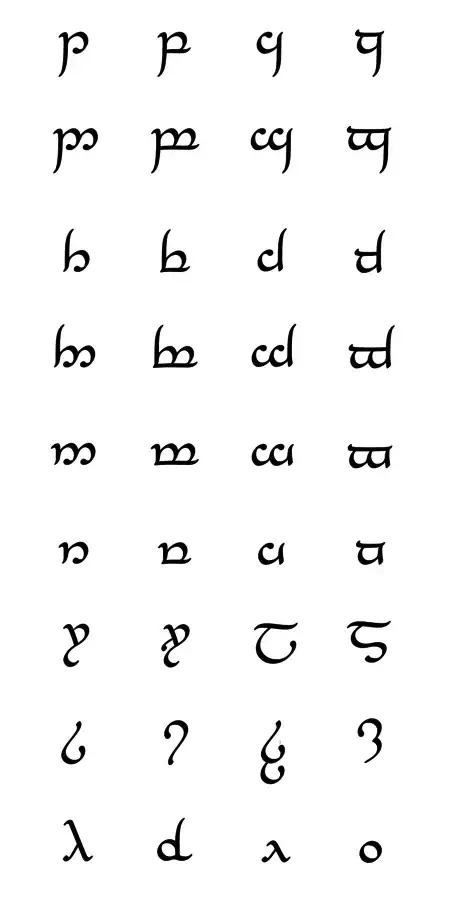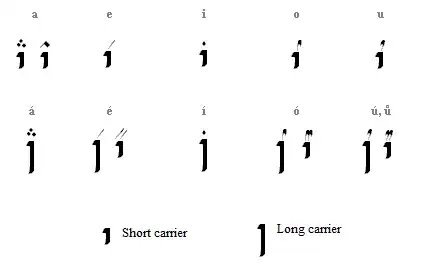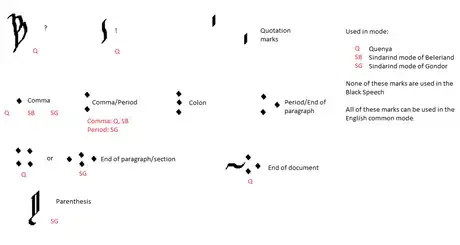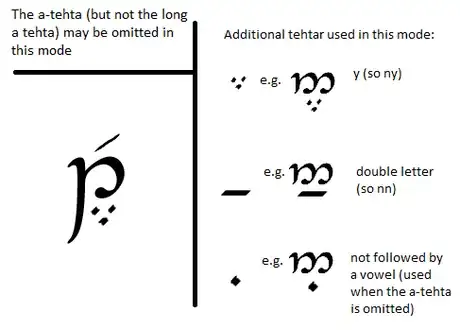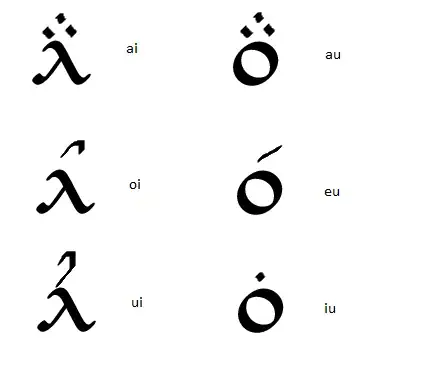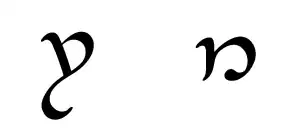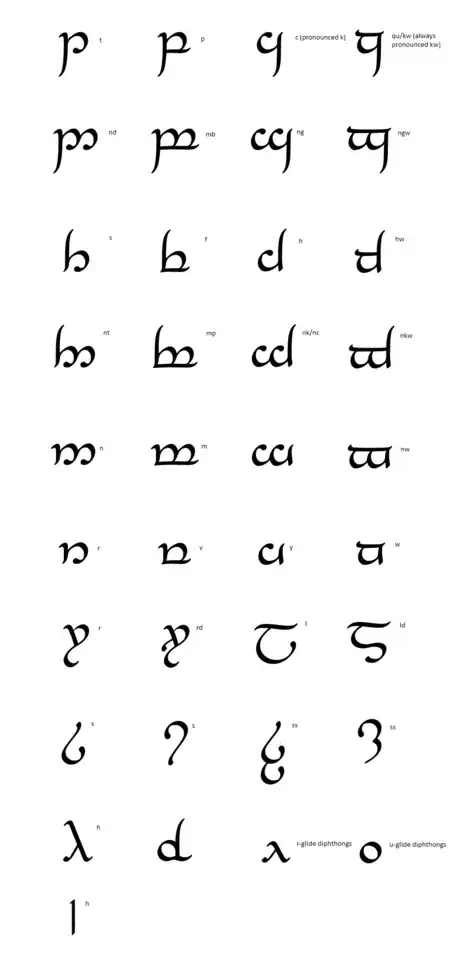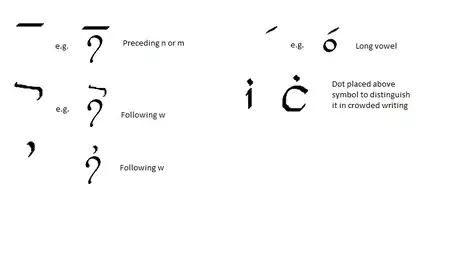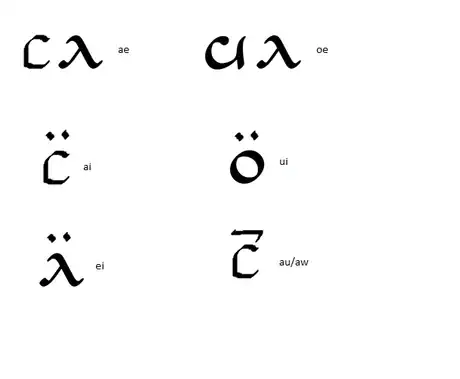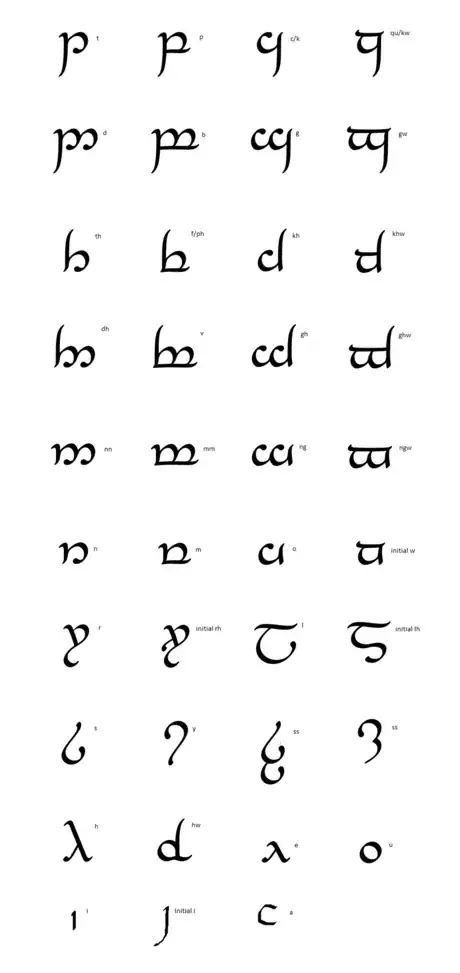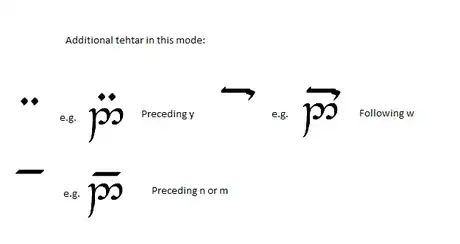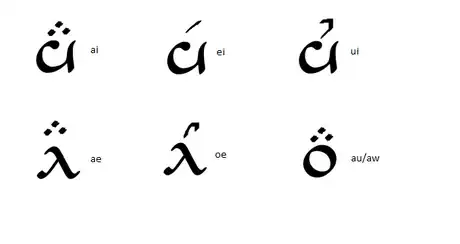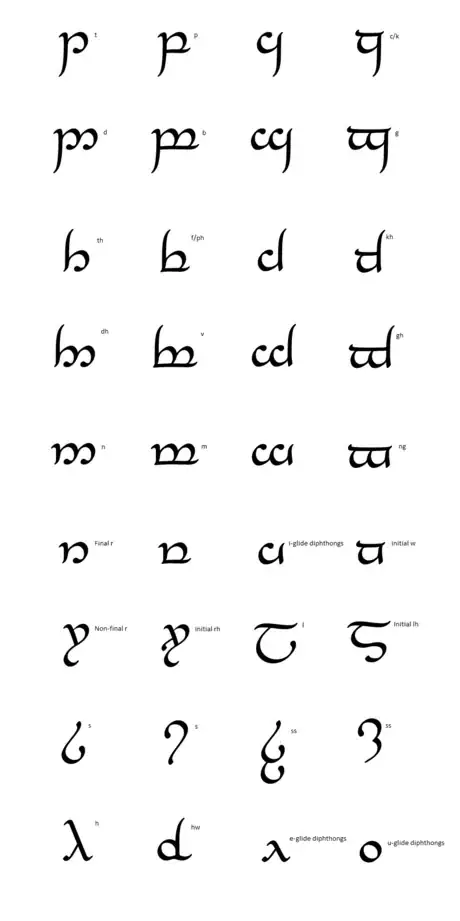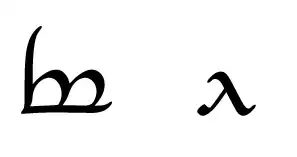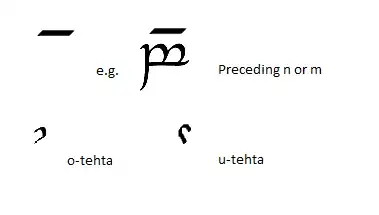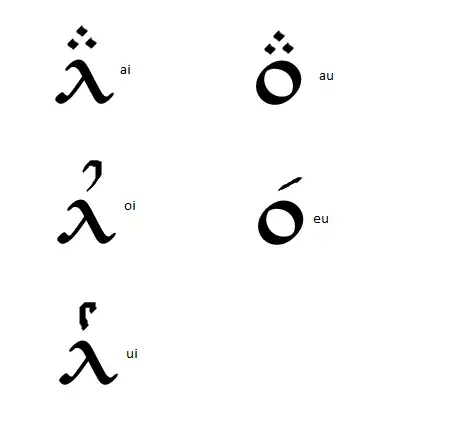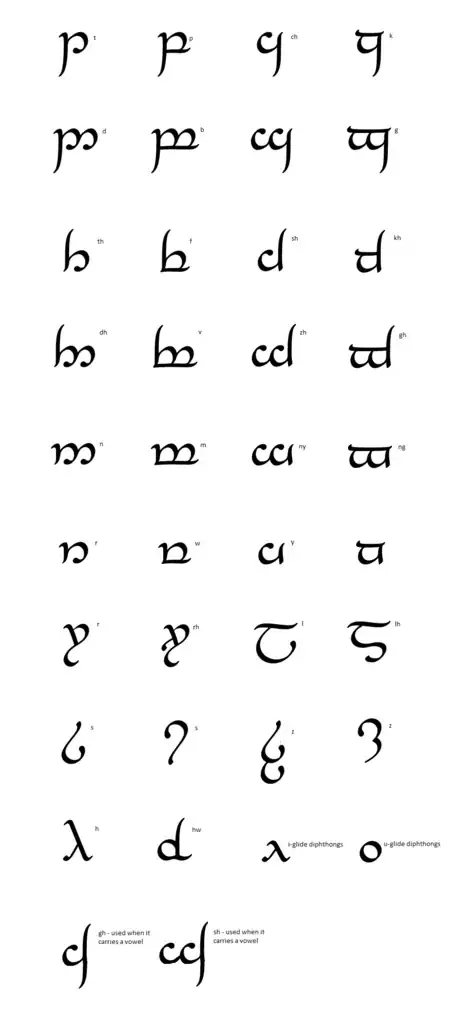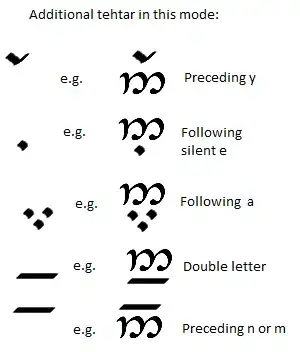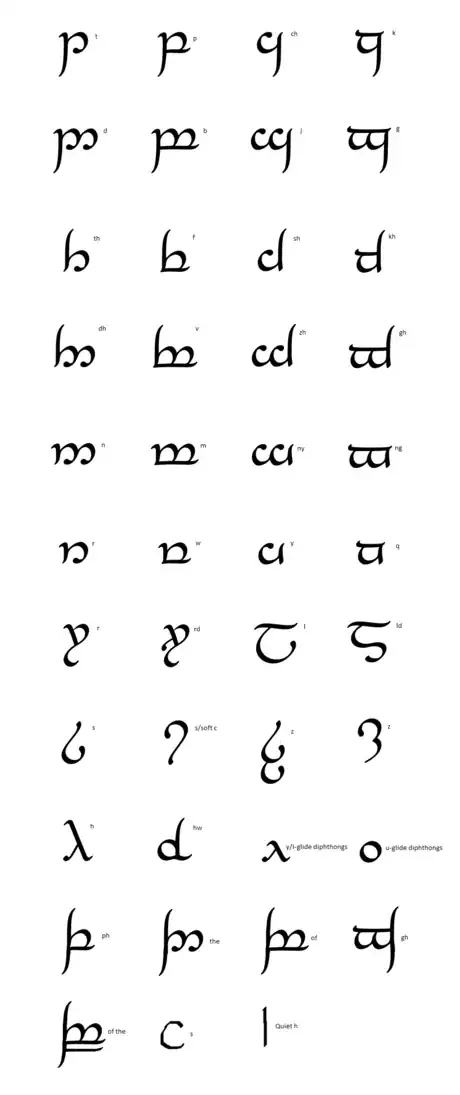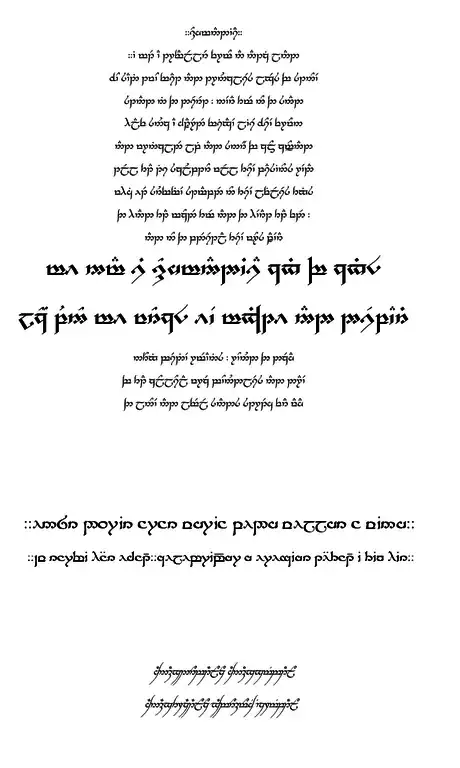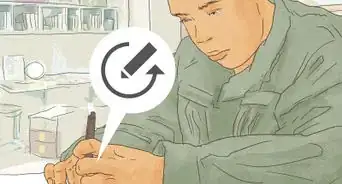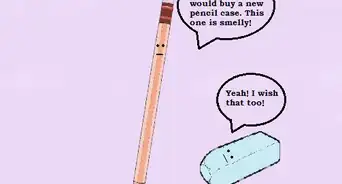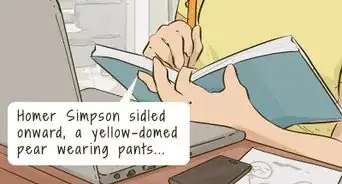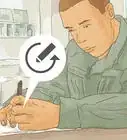X
wikiHow is a “wiki,” similar to Wikipedia, which means that many of our articles are co-written by multiple authors. To create this article, 9 people, some anonymous, worked to edit and improve it over time.
This article has been viewed 41,986 times.
Learn more...
The Tengwar from JRR Tolkien's work have become a very famous fantasy alphabet. Unfortunately, they're also one of the more complicated ones: the values of the letters are dependent on which "mode" you are using.
Steps
Method 1
Method 1 of 8:
Learning the Basics
-
1Learn the forms of the letters. The forms of the main letters (tengwa) are given above.
-
2Learn the numbers. Tengwar can use either base 10 (decimal) or base twelve. It can also be written with the units first (so units, tens, hundreds etc, so 125 is five hundred and twenty one) or the more familiar units last (the way numbers are written in English). Usually, when using base 12, a dot is placed under the units digit. You can also place a dot or an overbar (not both) above every digit to make them stand out.Advertisement
-
3Learn the tehtar. Most modes of tengwar have no letters for the vowels. Instead, they use diacritic marks, called tehtar, that show the positions of the vowels. The placement of the tehtar varies: sometimes they are placed on the tengwa before them, other times the tengwa after them. If there is no tengwa in the appropriate place, then the tehta (singular of tehtar) is placed on a carrier. The short carrier is used for short vowels, the long carrier is used for long (accented or doubled) vowels. Note that in some cases, the long vowel tehta cannot be placed on a tengwa, so it must be placed on a long carrier.
-
4Learn the punctuation. In some modes, only certain punctuation marks occur. Also, some writers don't use the tengwar punctuation, they just use standard English punctuation instead.
Advertisement
Method 2
Method 2 of 8:
Writing in Quenya Mode
-
1Learn the tehtar rule. In this mode, the tengwa is read first, followed by the tehta underneath it, then the tehta on top. Therefore, vowels are placed on the letter before them. Using these rules, the tengwa above would be read as tye.
-
2Learn how to write the diphthongs. These are two vowels pronounced as one sound. In all other vowel combinations, each vowel must be pronounced individually.
-
3
-
4Learn the values of the tengwar. The table above gives the tengwar values for this mode.
-
5Be aware that there are a few peculiarities in this mode. Learn them well:
- The first tengwa is only used for an s that developed from a th. E.g. Sauron was originally spelt Thauron, so it uses the first tengwa. Otherwise, use the second tengwa.
- The third tengwa is only used in Classical Quenya, where it has the value nw.
- The fourth tengwa is only used initially (at the start of a word). In Classical Quenya, it has the value ngw.
- The fifth tengwa is only used initially, as the carrier for a y-tehta.
- The sixth tengwa can be used for a v that developed from a w. E.g. Vilya (Elrond's ring of power) was originally Wilya (meaning air), so it is spelt with this tengwa.
- The seventh tengwa is used in front of an unvoiced, initial r or l
Advertisement
Method 3
Method 3 of 8:
Writing in Sindarin Mode of Beleriand
-
1Understand that this mode does not use tehtar for vowels. The Sindarin mode of Beleriand only uses tehtar for a few purposes (see picture). Because of this, it is known as a "full" mode of tengwar. Also, as this is the original full mode, other full modes are sometimes known as "Beleriandic" modes (there's a second full mode for Sindarin, the Sindarin full mode of Gondor, and two English full modes, in case you were wondering).
-
2Learn the diphthongs. A diphthong is a pair of vowels pronounced as one sound. All other vowel combinations are to be pronounced as individual vowels. Note that the diphthongs for ae and oe are written as a pair of symbols.
-
3Learn the doubled letters. In Sindarin, there are only four double letters (nn, mm, ll and ss). The correct way of writing each one in this mode is given above.
-
4Learn the values of the tengwar. The above table gives the values for this mode.
-
5Know that the tengwa for v is also used to write the letter f at the end of a word.
Advertisement
Method 4
Method 4 of 8:
Writing in Sindarin Mode of Gondor
-
1Learn the tehtar rule. In this mode the tehta is read first, then the tengwa. Therefore, vowels are placed on the letter after them.
-
2Learn the diphthongs. A diphthong is a pair of vowels pronounced as a single sound. All other vowel combinations are pronounced as individual vowels (I know that I'm repeating this in each method, but it's in case you've just skipped straight to this mode without reading the others).
-
3Learn the double letters. Sindarin has four double letters: nn, mm, ll and ss. Note that the underbar is only used to double ll and ss.
-
4Learn the tengwar values. The above table gives the values for this mode.
-
5
Advertisement
Method 5
Method 5 of 8:
Writing in the Black Speech of Mordor
-
1Be aware of the limitations. As only one piece of writing exists in Black Speech (the One Ring inscription), most of this mode is fan speculation. Tolkien himself never really developed the Black Speech.
-
2
-
3
-
4Learn the diphthongs. A diphthong is a pair of vowels pronounced as one sound. All other vowel combinations are pronounced as individual vowels. The diphthongs for Black Speech are pretty speculative.
-
5Learn the tengwar values. The above table shows the values for this mode.
Advertisement
Method 6
Method 6 of 8:
Writing in English Common Mode
-
1Learn the tehtar rule. The tehta is read before the tengwa. Therefore, vowels are placed on the letter AFTER them.
-
2
-
3Learn the tengwar values. The above table shows the values for this mode.
-
4Learn the peculiarities:
- The first tengwa represents kh as in loch and Christmas. Often the second tengwa is used instead.
- The third tengwa represents gh as in aghast and ghost. For gh as in bought, use the fourth tengwa.
- The fifth tengwa represents ny as in canyon, not as in pony.
- The sixth tengwa is usually used for a consonantal y, with the seventh being used as a vowel y.
- The eighth tengwa usually only appears in combinations such as ea in Earth.
Advertisement
Method 8
Method 8 of 8:
Practise, practise, practise
-
1Try to translate as many inscriptions as you can. See how much of the picture you can translate as a starter (you may need to click on it to get it to show up).
-
2Use it as much as possible. Write stories and poems using tengwar (you can get tengwar fonts online if you want to use your computer). Don't try writing your homework in tengwar though - teacher won't be very impressed!
Advertisement
Community Q&A
-
QuestionIs there a certain mark for an apostrophe?
 Community AnswerOn the keyboard, the apostrophe key is just to the left of the Enter key. When typed, the apostrophe looks like this '. When writing, the apostrophe is like a comma, slightly above the letters in the word you're writing.
Community AnswerOn the keyboard, the apostrophe key is just to the left of the Enter key. When typed, the apostrophe looks like this '. When writing, the apostrophe is like a comma, slightly above the letters in the word you're writing.
Advertisement
Warnings
- Reading tengwar is a bit trickier than writing it because you have to identify the mode that it is written in.⧼thumbs_response⧽
Advertisement
About This Article
Advertisement
